Indian Army Heroic Battles: The 1971 Battle Of Longewala
Freedom is perhaps the most cherished priveleage. We are blessed that we enjoy a free and secured life with all the basic amenities available to us. Thanks to the bravehearts who ensure our safety day and night. The Indian army has fought many heroic battles in the past and continues to serve the countrymen at all cost. Battle of Longewala is one such decisive and heroic battles fought by the Indian army during the 1971 Indo Pak war. It is one of the greatest Indian army victories headed by Major Kuldip Singh Chandpuri. From the technical details to reel life portrayal of the battle in Sunny Deol starer Border, we will discuss everything about this tale of bravery and valor further in the article.
Table of contents
Second Indo Pak War of 1971
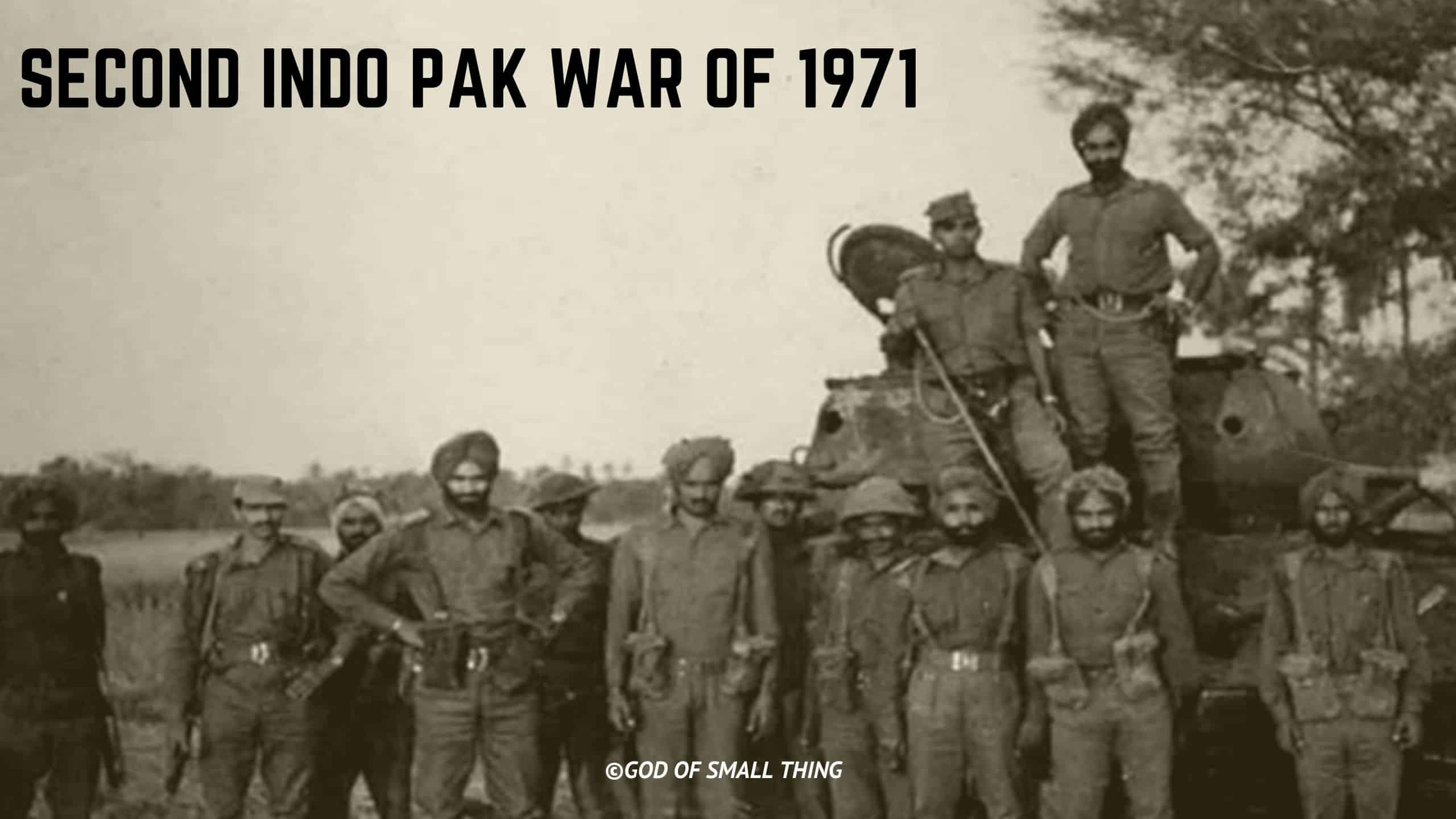
On December 3, 1971, Pakistan launched pre-emptive airstrikes on 11 Indian airbases. Most of those airfields were in the northwestern Indian region. This marked the beginning of the Second Indo-Pak war. It was one of the shortest wars in history, lasting for 13 days. At the end of the war, India had lost more than 2000 soldiers. It also lost 75 tanks and 43 aircraft. Apart from this, India took 9300 soldiers as Prisoners of War from East Pakistan. In terms of territory, India won 1500 sq miles while Pakistan won just 50 sq miles.
The war led to the liberation of Eastern Pakistan (present-day Bangladesh). All the three wings- the Army, the Air Force, and the Navy valiantly fought in the war. As India emerged victoriously, Pakistan publicly signed the Instrument of Surrender. It was the largest military surrender since World War II. It was also a battle that proved why the Indian Army is one of the best.
Why was the Indo Pak war of 1971 war fought?
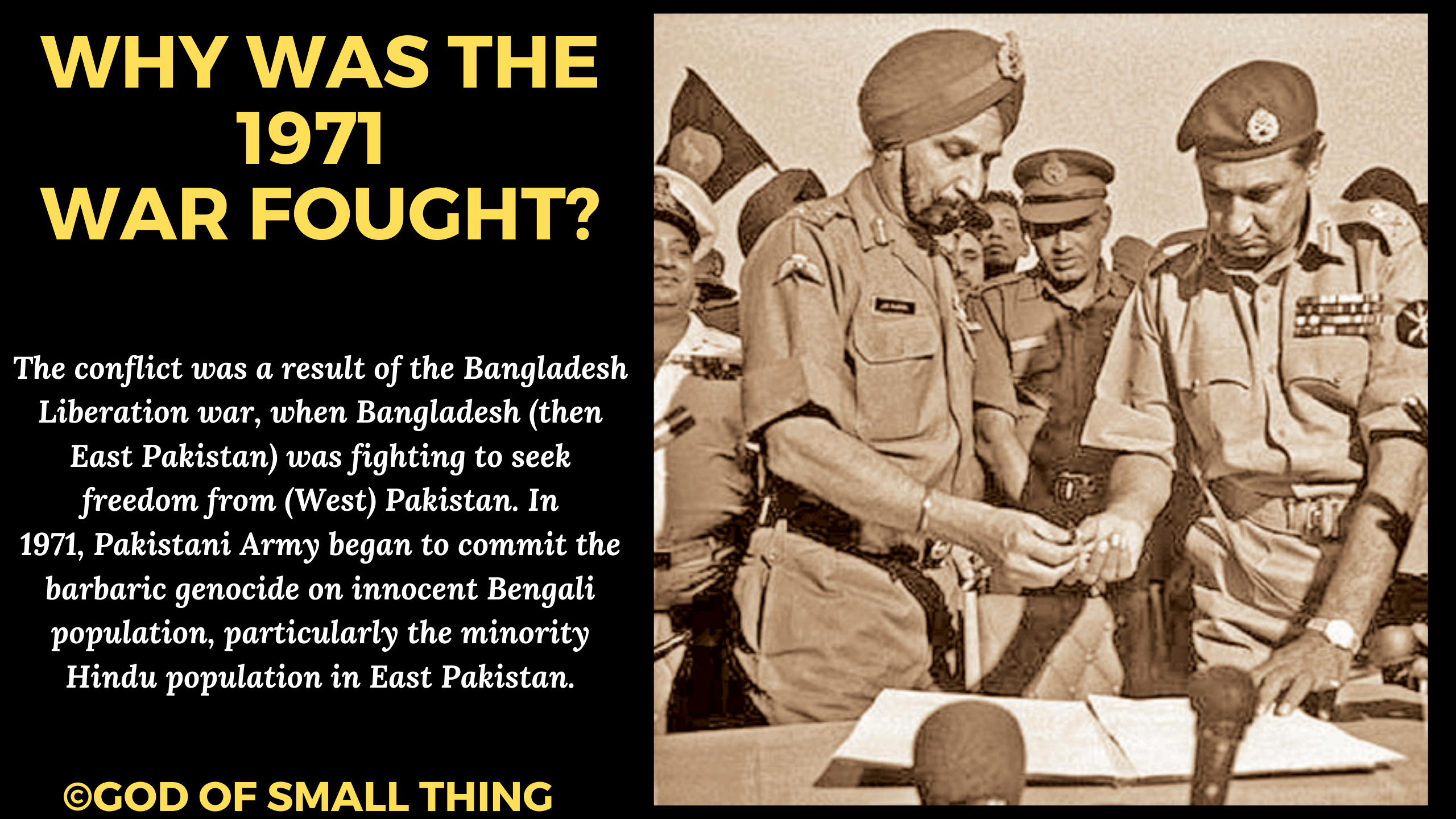
Pakistan launched the brutal genocide ‘Operation Searchlight’ to curb the Bengali resistance. The Bengalis wanted independence from the oppressive Pakistani rule. As their leader proclaimed independence, the Pakistani military unleashed its brutally designed massacre. The perpetrators killed thousands of Bangladeshis including young students and barbarically raped thousands of Bangladeshi women. Many academicians argue that it was the first time that rape was consciously used as a war weapon.
The 1971 Indo-Pak war was fought as a result of the 1971 Bangladesh Liberation war. At first, India provided refuge support to the Bangladeshis who had fled the atrocities. But this could not be a long term solution. Indira Gandhi, then Prime Minister of India, tried to put international pressure on Pakistan to withdraw. Finally, in December 1971, the Indian Army captured Eastern Pakistan, which later declared its independence as Bangladesh.
The Battle of Longewala
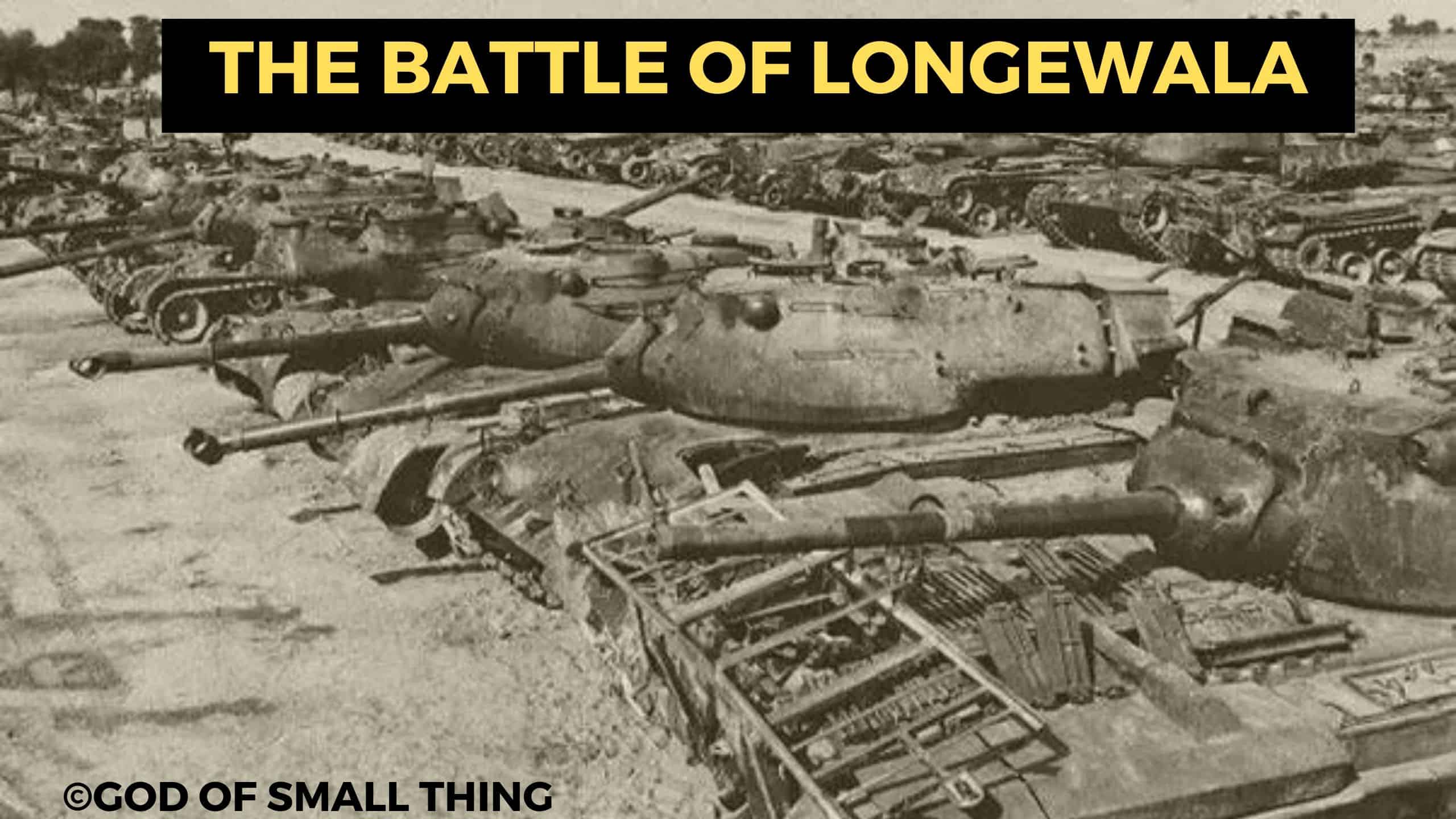
The Battle of Longewala was one of the remarkable battles fought during the 1971 Indo-Pak war. Longewala is situated in Jaisalmer, Rajasthan. The International Border (IB) is situated 18kms away from the BSF Post of Longewala. During the battle, the BSF had vacated the post and a company of 120 men of Indian Army’s 23 Battalion of the Punjab Regiment took over. Major Kuldip Singh Chandpuri led the company at Longewala. The rest of the 23 Punjab had moved to Sadhewala to capture Rahimyar Khan.
Both India and Pakistan believed that the deserts of Rajasthan and Sindh were not conducive to any major operations. Despite this, India decided to launch its forces from Sadhewala- Tanot- Kishangarh. It planned to capture Rahimyar Khan (Pakistan) and disrupt Lahore- Karachi rail-road link. However, Pakistan intelligence found about this plan. It thought that India still considered a large scale operation as unfeasible in the desert. Hence, there will be no effective opposition from the Indian side. Moreover, it felt that India had not activated Jaisalmer’s airbase. so they did not expect to encounter major action there. Based on all these assumptions, Pakistan was all set to launch a fully packed attack on India in the Battle of Longewala.
The Situation at Longewala post
The Longewala post had an underdeveloped defense. There were no mines or barbed wire erections. The only thing that later proved advantageous was the single strand wire. The BSF had laid it to keep their camels from wandering off. At the time of the attack, it gave the enemy a false impression that the actual minefield surrounded the post. The force of 120 men, led by Major Kuldip Singh Chandpuri, had the assistance of- two medium machine guns; two 81 mm mortars; and four shoulder fire rocket launchers for anti-tank defense. On December 5, two jeep borne 106mm recoilless guns and three AMX light tanks also arrived to aid them.
The Beginning of the Battle
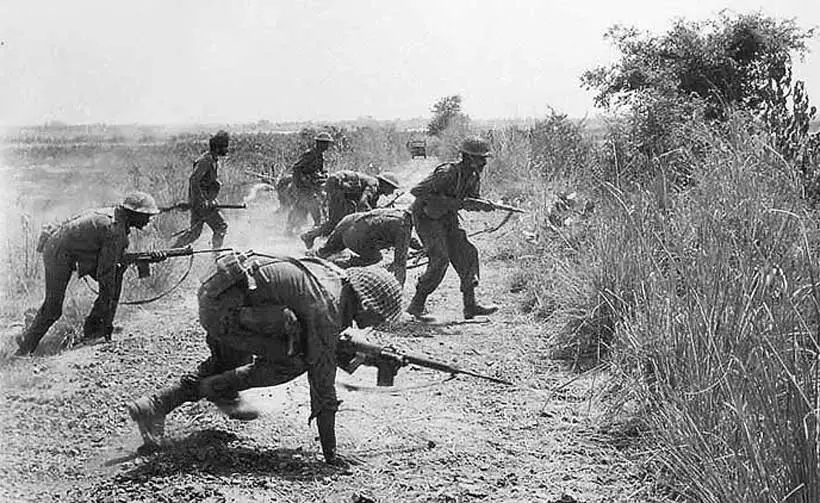
The Battle of Longewala began on the intervening night of December 4th-5th. Pakistan had crossed the IB to capture Ramgarh. It wanted to neutralize the airbases at Jaisalmer.
A platoon led by Lt. Dharamvir Singh sensed the enemy’s cross border entry. Lt. Singh informed Major Kuldip Singh Chandpuri about the enemy’s entry across the IB. An Army Air Observation Post aircraft confirmed the entry. A 20km long armored Pakistani 18 Infantry Division was making its way towards the Longewala post.
There were 3000 soldiers, dozens of armed personnel, around 60 Chinese T-59 tanks and more than 500 trucks and vehicles. The enemy outnumbered the Indian Army there. Major Kuldip Singh Chandpuri called for help from the battalion headquarters. But it would take at least 6 hours to reach. Hence, he decided to prepare his men for the soon to be historic Battle of Longewala. Meanwhile, Lt Dharamvir continued shadowing the enemy and kept passing their southward progress to Major Kuldip Singh Chandpuri.
The Pak army of around 3000 soldiers had outnumbered the Indian Army there. Their plan was indeed bold. Suspecting a tank battle, they sent the 51 Bde and 22 Cavalry with its better tank state to Ramgarh. They sent the 38 Group Cavalry to Jaisalmer. 206 Bde would follow and capture the Longewala battalion. The Pak Air Force could provide them air cover only from the next day.
Drawbacks that Pakistan faced during the war
But Pak made major flaws while implementing the plan during the Battle of Longewala. To support troop lifting in the desert terrain, they did not have suitable transport. They used good carriers and tractor trolleys instead. But those got stuck in the sand.
This is why they were able to cross only 30kms from the border by the morning of December 4. The enemy’s GOC 18 Infantry Division asked the troops to disperse until the last light of the night. Their arrangements of repair during the battle were not adequate. They had to abandon some of the tanks that required engine replacements. To overcome these shortcomings, they strapped each tank with an additional fuel drum. This, however, proved extremely fatal when the IAF attacked the tanks later.
The Ground Combat
The Pakistani Army had launched the attack at midnight. As they approached the post, they killed 5 camels of the 14 battalion BSF detachment. Major Kuldip Singh Chandpuri and his men lacked time. Hence they laid an anti-tank minefield in a hurry.
When the Pakistani army reached further closer, the Indian Army used its jeep-mounted 106mm M40 recoilless rifle to combat the enemy’s tank-laden troops. Major Kuldip Singh Chandpuri along with his men defended their post with consistent firing all alone. The IAF, led by Wing Commander Andy Bawa, could not intervene as the aircraft was not equipped with night vision.
On the other hand, the sand did not favor Pakistani 38 Cavalry’s advance. They had planned to bypass Longewala to reach Ramgarh. But most of their tanks and vehicles either broke down or got stuck in the desert. The GOC ordered them to capture Longewala.
Have you heard of Baba Harbhajan Singh? His story will give you goosebumps! A Soldier Protecting The Border’s Even After Death!! Baba Harbhajan Singh.
The Role of IAF in the Battle of Longewala

With the first light of the dawn of December 5, 22 Cavalry with 38 Baluch had surrounded the Longewala post. There was an exchange of fire that kept both sides engaged. Major Kuldip Singh Chandpuri and his men successfully held the enemy in a firefight until dawn. Wing Commander Andy Bawa led the IAF at the Longewala post. At around 7.30 a.m. the IAF sent some HF-24 Maruts and Hawker Hunter at the post. The Hunters launched an attack on the enemy with 16 Matra T-10 rockets and 30mm cannon fire. The attack killed 4 soldiers, wounded another four and destroyed 5 tanks.
When the Hunters departed, the Pak troops tried attacking the post again. A second airstrike this time caused more casualties and destroyed 6 tanks. The Pak troops did not have an air cover, which made the task much easier for the IAF. The false impression of a minefield also made the enemy reluctant to carry out the actual assault. The hunters kept coming back again and again. The enemy tried to take cover under dust clouds created by tanks to hide from the Hunters’ attacks. As the enemy was evading, a final attack of the Hunters came at around the time of sunset.
The IAF had caused extensive damage to the enemy. Brigadier Mir’s reluctance made GOC realize that capturing Ramgarh- Jaisalmer was out of his reach. Hence, they limited their plans to Longewala. The GOC gave the task to the 206 Infantry Brigade. The brigade planned to move along Longewala- Jaisalmer road to secure Ghotaru. Meanwhile, another of their regiment came up with the plan to capture Longewala. It asked Brigadier Mir to guide and provide fire support. But he refused and asked the Brigade to withdraw. The 206 Infantry could not carry out its planned assault.
On December 6, the IAF continued the attacks. Meanwhile, the GOC had ordered 206 Infantry to move forward to capture the post. By afternoon, however, the GOC realized that things have gone out of control. Hence, they ordered the 206 and 51 brigades to withdraw one by one. Haste in withdrawal would increase the casualties. But the IAF’s Hunters kept attacking furiously. GOC ordered a general withdrawal. The troops moved back in the ‘mad rush’.
Who died in the Battle of Longewala?
In the vigorous Battle of Longewala of the 1971 Indo Pak war, India lost two of its soldiers. However, India inflicted heavy casualties on Pakistan. The latter lost about 200 of their troops. Pakistan also suffered a loss of around 34 tanks- most of them were either destroyed or abandoned. They also lost 200 additional vehicles. India lost its jeep-mounted recoil-less gun.
As India emerged victorious in the Battle of Longewala of the 1971 Indo Pak war, there were strategic failures from both sides. Pakistan failed the execution of a rather bold plan. It failed to ensure the support of an air cover. It also underestimated the challenges put up by the desert terrain. Further, there was a lot of confusion among their troops even at the time of moving back. On the other hand, India also failed to analyze all the probabilities of attack. It deployed only 120 men of the Indian Army at the Longewala post. Even the post was not armed adequately to stand an enemy attack. Further, the Indian Intelligence failed to monitor such a massive attack from the western front. It could have provided warnings beforehand. No matter what, this victory became one of the greatest Indian army victories.
Is Border movie a real story?
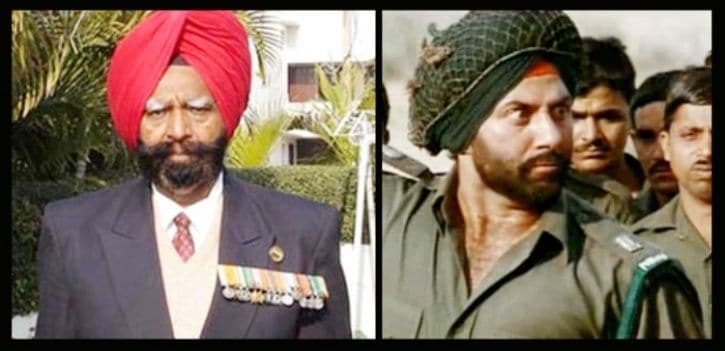
The 1997 movie “Border” stirred emotions in every Indian heart. We have all shed tears to the lyrics of “Sandese Aate Hain”. The movie was a tribute to the heroism displayed by the sons of Mother India during the Battle of Longewala fought during the 1971 Indo Pak war. The movie covers how such Battles prove that the Indian army is one of the best. Let us look at how genuine the reel depiction of the Battle of Longewala, one of the greatest Indian army victories, was;
- The director JP Dutta had dedicated the movie to his deceased brother who was an IAF pilot. He also used the diaries he had
- The movie was shot at the actual locations of the Battle of Longewala in the deserts of Bikaner. Some scenes were also shot in Jodhpur.
- Real army men participated in the shooting of the movie. Also, the Indian Army and the Indian Air Force provided actual equipment. They used T-55 tanks in place of the Chinese T-59s. Weapons like the Bren Machine Guns were used. The IAF provided aircraft like MiG-21s. Apart from this, army jeep and other vehicles.
- Authentic Hawker Hunters aircraft were used in the making of the film. These were the same aircraft that the IAF used during the actual Battle of Longewala. They also used the unit logos while shooting.
- Sunny Deol played the character of Major Kuldip Singh Chandpuri, who led the Indian army towards victory.
- The movie was a fictional account of the Battle of Longewala. A lot of additions were made to create an impact on the audience. For example, in reality, the Indian Army lost two of its soldiers in the Battle of Longewala. While in the movie, the casualties were exaggerated.
Major Kuldip Singh Chandpuri
Brigadier Kuldip Singh Chandpuri was the hero who led India towards victory in the Battle of Longewala. He was a Major in the Indian Army at the time of the 1971 Indo Pak war. When the battle began, they did not receive warnings of the surprise attack from the Indian Intelligence.
The Longewala post was unarmed even until the enemy’s attack. Moreover, the enemy outnumbered the Indian side in terms of men, weapons, and tanks. He refused the option to withdraw when given the choice. He fearlessly chose to fight for the sake of his Motherland. Amidst all these troubles, he did not let his men lose their calm. He led all his 120 men with extreme patience. Under his leadership, his company succeeded in engaging the enemy all night until the IAF arrived in the morning.
Major Kuldip Singh Chandpuri received the second-highest gallantry award- the Maha Vir Chakra for his exceptional leadership during the battle. The 1997 movie ‘Border’ successfully depicted his courage and patience during the battle. In 2018, he died from cancer at the age of 78. He is survived by his wife and three sons. India salutes the valor and fearlessness of one of its forever immortal heroes – ‘Brigadier Kuldip Singh Chandpuri’.
Have you heard of Sikkim Scouts? It is the youngest Indian Army Regiment like no other “Sikkim Scouts- Guardians of Honour” – God of Small Thing
How many Indian soldiers died in the war of 1971?
India put up a vigorous fight against the enemy for two weeks during the 1971 Indo Pak war. India lost 2,307 of its soldiers to the war. 6,163 soldiers were wounded and 2,163 went missing.
One of the men that we lost, was Flying Commander Nirmaljeet Singh Sekhon who defended the Srinagar airfield. He engaged in an unequal combat against four enemy aircraft.
During the combat, his aircraft crashed and he lost his life. Another braveheart, Major General Ian Cardozo lost his leg having stepped on a mine. To prevent the infection from spreading, he amputated his leg using a kukri. Second Lieutenant Arun Khetrepal fought till his last breath while fighting the enemy at Jarpal, Shakargarh. Major Hoshiar Singh was another martyr from the Shakargarh sector. He inflicted heavy casualties on the enemy near the Basantar River protected by the Pak army. The brave Lance Naik Albert Ekka along with his defended Agartala from the enemy’s attack.
Who is the winner of the 1965 war?
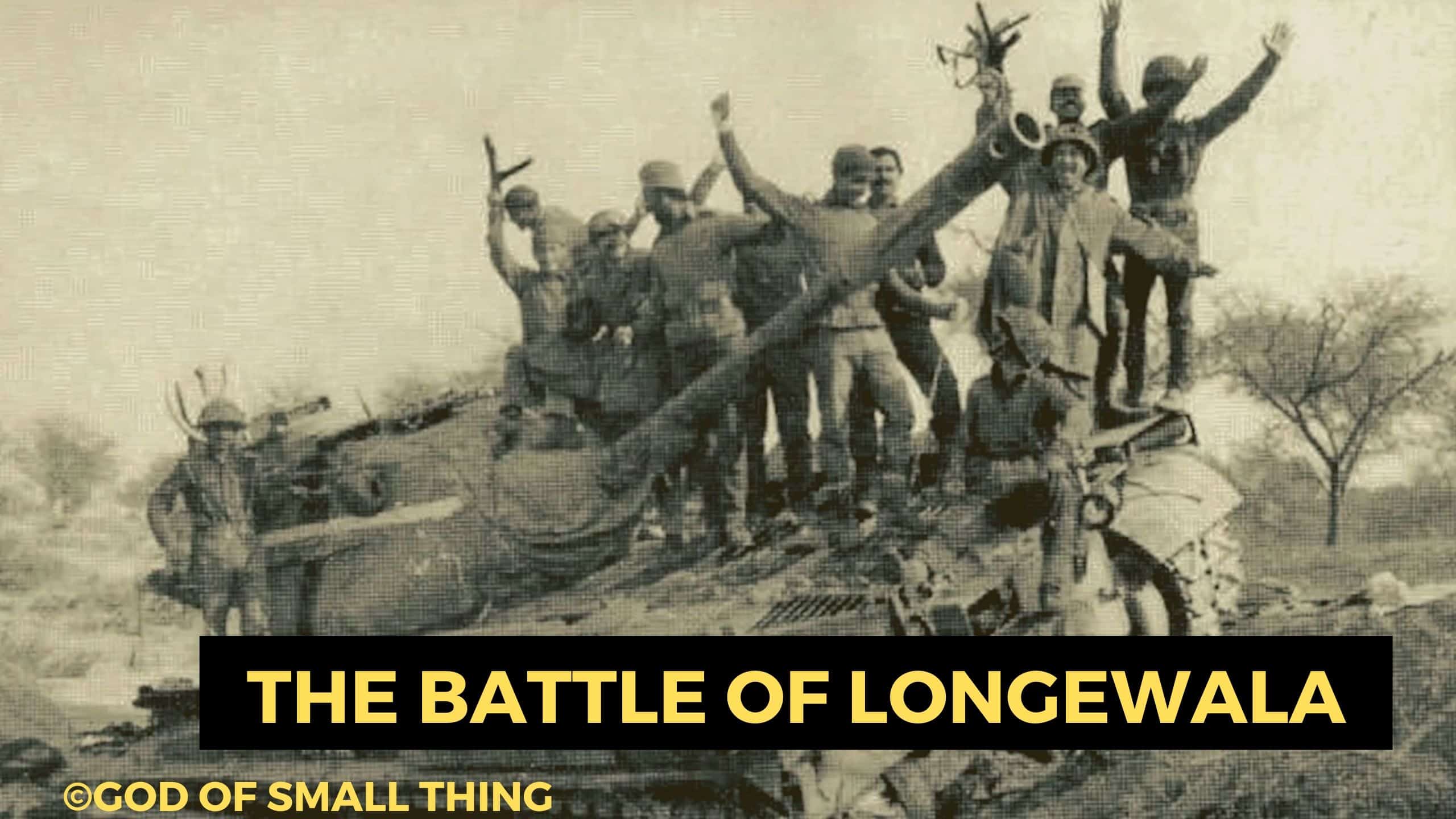
The First Indo-Pak war was the second conflict between the two nations after the Kashmir war of 1947-49. It is considered as one of the largest tank battles after WWII. India lost 97 tanks while Pakistan lost 450. It began with Pakistan launching covert operations across the ceasefire line in India Occupied Kashmir. In return, India launched its attack on West Pakistan. More than 1,00,000 Indian troops fought against 60,000 troops of Pakistan. The war lasted for 17 days. By the end of the war, India had won 1932 sq km of the territory while Pakistan won 540 sq km. Pak lost 5,800 troops and India lost 2,682.
The most controversial fact about this war remains that both countries claim the victory. India has presented documents that confirm that it captured the Haji Pir Pass. It also claims to have had major gains in Sialkot and Lahore. The Haji Pir Pass was the key strategic post during the war. Pakistan also claims to have won the war. But it has never presented any proof confirming the claim. It, however, also never signed a surrender document. Hence, the war officially did not have a winner. Consequently, the war came to an end when the UN intervened declaring a ceasefire.
But different authors hold different views about the winner;
- Dennis Kux (retired American diplomat) believed that both the countries lost a lot in terms of manpower. And neither of them secured a clear cut military advantage over the other. But India succeeded in preventing Pak from seizing Kashmir by force. On the other hand, Pakistan did not make a substantial gain.
- John Keay (English Historian) admitted that both sides claim the win. But India crushed Pakistan’s attempt to take over Kashmir. It also managed to advance into Lahore. Hence, he believes that India has gained more.
- Stanley Wolpert (American author) believed that the war was a draw. Despite this, he admitted that India had an upper hand to inflict grave damage on Pak.
Battle of Longewala fought during the 1971 Indo Pak war was one of the greatest Indian army victories.
Source: Wikipedia
With so many structural changes in the country, A question has always been coming up from time and now. Can India implement the Uniform Civil Code in India? -Here’s Everything Related to Uniform Civil Code in India

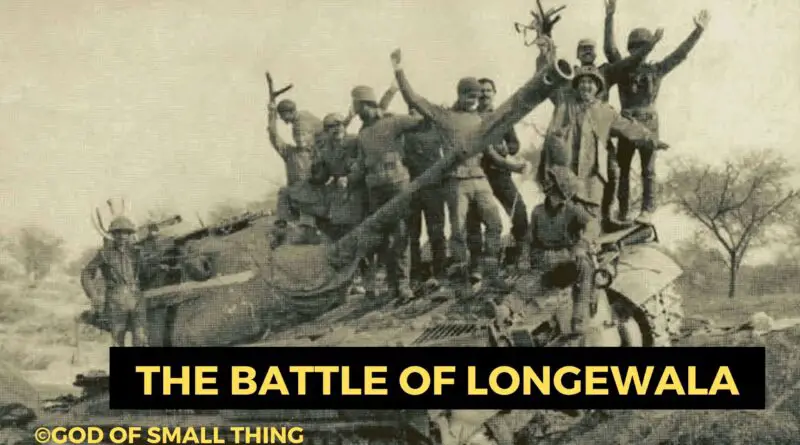
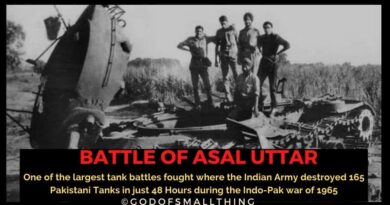

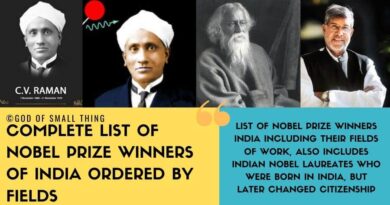
Your writing is amazing! I love how informative this article is.
Thankyou so much! I am glad you liked it.
Nice and a fairly balanced article OP, but you need to work on that last section about the 1965 war. What you referred to as the largest tank battle after ww2, was the battle of chawinda fought between 1st armoured division of IA and the 6th armored div. of the pak army. Needless to say, the Indian advance towards lahore was successfully halted by the defenses mounted by the pak army and PAF. Also, the claim that tank losses differ by more than 300 appears to be somewhat exaggerated, especially when you take into account the qualitative and numerical superiority of the armour and artillery fielded by Pakistan. Pak had a distinct advantage over India with its American made M47 and M48 patton tanks. The bulk of Indian fleet consisted of the older ww2 era M4 sherman tanks. I’ll admit that pak 1st armoured div lost quite a few pattons in that asal uttar debacle, but even with a loss of 100+ tanks on pak side, the numbers simply don’t add up. Now, I am patriotic as much as the next guy, but when you put aside those idealised notions of brave Indian soldiers for a while Op, you’ll realise the same thing:better tactics and equipment=Victory. And please try to avoid citing Wikipedia as your primary source, especially on these topics. Wikipedia(being a open platform for editing), articles on wars are frequently vandalised by Internet warriors of participating nations.
My apologies op, if you find the comment condescending. I don’t intend it to be that way. Btw, did you type an article this long all by yourself? I am really impressed if you did. Your work doesn’t seem like a Wikipedia copy-paste to me, though.
Btw, could you recommend a book or something on Indian history or politics to read during the quarantine lockdown?(you sound like a history geek like me 😉
Pingback: Complete List of Nobel Prize Winners of India Ordered by Fields
Pingback: Greatest tank battle in history: Battle of Kursk| World War 2
Pingback: Battles That Changed Indian History Forever
I am extremely sorry for replying to your comment so late. Thankyou for reviewing the article with so much interest. I will definitely work on everything that you said about the writing. And yes I typed it myself. I actually went through alot of other websites too including some accounts by the soldiers who witnessed the war first hand.
Well I would recommend The Doctor and the Saint: Caste, Race and Annihilation of Caste by Arundhati Roy. It’s focused on the various aspects of casteism in India and it also includes the perspectives of Ambedkar amd Gandhi on the same subject.
Also,I am presently reading a book on the Middle East called Nine Parts of Desire by an Australian journalist, Geraldine Brooks. It’s a great read focused on the lives of Islamic women of the Middle East. ( I hope you won’t be disappointed?)
Sir may I add that the image showing “The Role of IAF in the Battle of Longewala”, is actually a picture of Sabre F-86 Fighters of the PAF doing Target practice with Nepalm Bombs. The planes that took part in the Battle of Longewala were Hunters, which have a distinctly different profile.
This goes far beyond the commenting! It composed his thoughts
while reading the article amazingly 🙂
Best regards,
Demir Hessellund